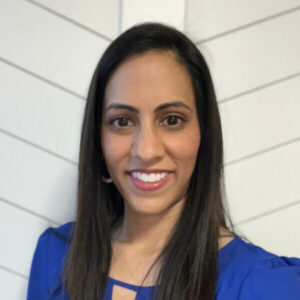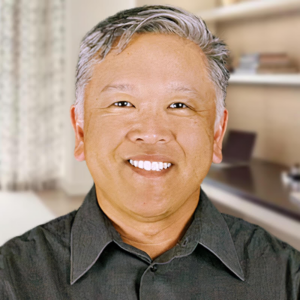I had the chance a few years ago to scratch an item off my bucket list when I flew to New York and saw the US Open Tennis Tournament live. As a casual fan and player, I loved the opportunity to sit sometimes as close to 10 feet away from Nadal, Murray, Djokovic and Williams – the best in the world. As I watched them play, I could predict who would win almost every time by looking at only one statistic: unforced errors. An unforced error is a lost point entirely the result of a player’s own blunder, and not because of how well the other player played. As dentists struggle to repay record levels of student-loan debt, many are making unforced errors that threaten to threaten their long-term financial security and delay retirement.
Unforced error #1: Assuming Income-based Repayment Plans are the Best Option
With government-backed student loans, many people compare the “standard” repayment option with an income-based repayment plan and choose the latter. The standard repayment plan is the default option with most plans, and requires the borrower to make payments for (usually) 10 years. Many borrowers see the monthly payments on the 10-year plan and think “there’s no way I can afford that!”
By contrast, the income-based repayment option, the newest of which became available last year, cap student loan repayments at 10% to 15% of a borrower’s annual discretionary income. This amount is determined by a formula that includes the borrower’s income, family size and other factors. Many people justify this decision assuming the additional cash they’ll keep in their checking account will be used for other financial goals, like funding their own practice or saving for retirement.
There are two problems to this approach. First, the amount of interest you would end up paying on the income-based repayment option is usually many, many times larger than the standard repayment option. The government is going to get enough of your money as a dentist as it is! Second, having extra cash available for other priorities is in theory a good idea, but is usually horrible in practice. If the cash is there, it will get spent. And rarely is it going to a savings account or a Roth IRA.
To be clear, there are some dentists for whom these income-based repayment options make sense. If you’re going into private practice someday, you probably would be better off biting the bullet and getting out from underneath those loans sooner. Talk with a qualified dental accountant or financial advisor to see for certain which option is best for you.
Unforced error #2: Not Understanding Your Loans
I am frequently shocked at conversations I have with dentists around their student loans. Frequently they don’t even know what they have. I don’t blame them. If I had hundreds of thousands of dollars in debts, I wouldn’t be excited to pop over to the computer and see the damage either. But, sticking your head in the sand is not a winning strategy.
The first step to knowing which option is best is to compile a list of all loans in one place, including loan type, principal amount and interest rate. When you see that list, you’ll have one (or both) of two types of student loans: federal and private. Federal loans are loans the government makes to you, with the interest rate set annually by a formula based on the yield of 10-year treasuries. Private loan rates are set using a borrowers’ credit history and lent by a bank.
Why bother? First, knowing where you stand will help you to know your options. And whether it makes sense to refinance (have a bank pay off your loans, and give you a new loan at a lower rate) or consolidate (combine some or all existing federal loans into one loan with the same average weighted terms.) In addition, knowing these details helps to understand which repayment options are available. For example, many dentists want to use the Pay as You Earn (PAYE) – a repayment option that frequently offers the lowest monthly payments, with the highest possible loan forgiveness – a dentist can’t have borrowed before Oct. 1, 2007 and not after Oct. 1, 2011.
For details on your private loans contact your lender. On federal loans, start at the National Student Loan Data System at nslds.ed.gov.
Unforced error #3: Prioritizing Student Loans at the Expense of Retirement Savings
In a push to become debt-free, many dentists prioritize paying off their student loans over saving for retirement. That could be a huge mistake. The two main reasons this is a mistake are the possible employer match, and the higher expected rate of return on investments than today’s student loan interest rates.
A dentist working as an employee or associate for a few years (or more) after dental school will likely have the option to get the employer match from an employer-sponsored 401k. A recent report from Morningstar subsidiary HelloWallet found that someone with a $50,000 starting salary who paid off a $20,000 student loan balance early and held off on retirement savings losing out on the 3% employer match will end up with a net worth $150,000 less than if she had contributed enough to get the 3% employer match. The match is free money! Nowhere else in the investing world will you get a guaranteed rate of return of 50% (this is the legal minimum) without any risk.
But, let’s say you’re not a dentist with a 401k to participate in. Green light to hold off on retirement until your student loans are paid off – right? Not so fast.
In a zeal to become “debt free” many dentists forget to use the expanded, but more accurate definition of debt. For most dentists, “debt free” means they don’t owe any money to anyone else. This isn’t incorrect, but it is an incomplete definition. A good financial advisor will explain to you that “debt free” will also include future obligations. Think: retirement, college savings, weddings, etc. The government calls these “unfunded liabilities” – think about your own social security benefits for a perfect example. You have personal unfunded liabilities. Would like to be able to stop practicing dentistry someday? In order for that day to come, you’re going to need a pile of assets from which to pull and live off. In order for that to happen, you need to save for retirement.
Whether you start saving for retirement or pay off your student loans will depend on an analysis of your numbers and personal situation. The crux of the analysis will hinge on your student loan interest rates, and your anticipated rate of return on your retirement investment portfolio. Taxes are also a factor. Some dentists qualify for tax benefits on student loan interest paid. Some costs of retirement savings can be tax deductible as well. Talk with a Certified Financial Planner who works with dentists, or a good dental accountant to talk through your specific situation.
Unforced error #4: Not Automating Payments
Dentists should almost always automate their student loan payments (along with many other payments). This ensures they won’t be late with a payment, something that can wreak havoc with credit scores and therefore future business opportunities. Plus, many financial institutions will cut a quarter of a percent off your student loan interest if your payments are automated. Set it and forget it!
Unforced error #5: Not Refinancing Your Federal Student Loans
We have heard many doctors say that they don’t want to refinance their federal student loans to a private group (like www.sofi.com) because the federal loans will be forgiven if they die, but the private loans will not. That is true. However, by cutting the interest rate down we have seen doctors save hundreds of thousands of dollars, literally! And with that savings, they can easily buy a cheap term life insurance policy to cover the debt if they die, thereby ending up way ahead in the game.
Winning in tennis is usually simple – don’t make unforced errors. Winning in finances as a dentist can be tougher to discern. One way you can tell many dentists aren’t winning is the average age of retiring doctors: almost 70! Don’t let unforced errors with your student loans take you off the winning path of a more youthful financial freedom.







